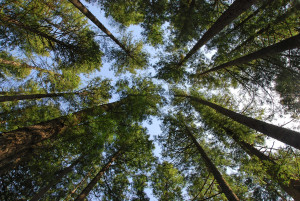We ♥ Forests
 Forests are one of the most important resources on our planet. They cover approximately 30% of the Earth’s surface and are home to countless species of plants and animals. Forests are also a source of renewable energy, provide important ecological services such as carbon storage and water purification, and play a critical role in climate regulation.
Forests are one of the most important resources on our planet. They cover approximately 30% of the Earth’s surface and are home to countless species of plants and animals. Forests are also a source of renewable energy, provide important ecological services such as carbon storage and water purification, and play a critical role in climate regulation.
There are several types of forests, each with their own unique characteristics. The main forest types include tropical forests, temperate forests, and boreal forests. Learn more about the World’s forests here. Each of these forest types is defined primarily by their distance from the equator.
Timmins is surrounded by the boreal forest. The boreal forest, also known as the taiga, is the world’s largest terrestrial biome. It covers about 11% of the Earth’s surface and is found primarily in Canada, Russia, and Scandinavia. The boreal forest is characterized by cold winters, short growing seasons, and a large number of coniferous trees, such as spruce, pine, and fir. Learn more about the Ontario’s forests here.
Forestry, another “F” word
Forestry is a complex and often controversial topic, with many differing opinions on the best ways to manage and utilize our forests. Some people argue that forestry practices are necessary to meet the growing demand for wood products, while others believe that forests should be preserved in their natural state. It is important to keep in mind that the natural state of a forest is not static. The forest is a living system that is in a constant cycle of growth, decline and renewal.
One of the key arguments in favor of forestry is that wood is a renewable resource. Unlike fossil fuels, which are finite and non-renewable, trees can be grown and harvested sustainably over time. When managed properly, forestry can be an environmentally friendly and economically viable industry that supports local communities and provides valuable products for consumers.
However, forestry is a complex and multifaceted topic that is the subject of much debate and controversy. Whether it’s chemical use, harvest practices, regeneration techniques or utilization, there are valid concerns about the impact on the environment and the industry needs to be continuously working to improve.
Despite any controversies, there is no denying that wood is a versatile and valuable material that plays an important role in many industries. In addition to traditional uses such as construction and furniture, wood is also used in the production of renewable energy and as a raw material for bioproducts.
Another important aspect of forestry is its role in a circular economy. In a circular economy, resources are kept in use for as long as possible, and waste is minimized through recycling and reuse. Wood is a perfect example of a circular resource, as it can be recycled and reused in a variety of ways, including as building materials, fuel, and paper products.
By promoting sustainable forestry practices and incorporating wood into a circular economy, we can ensure that this valuable resource is used in a way that benefits both people and the planet.
